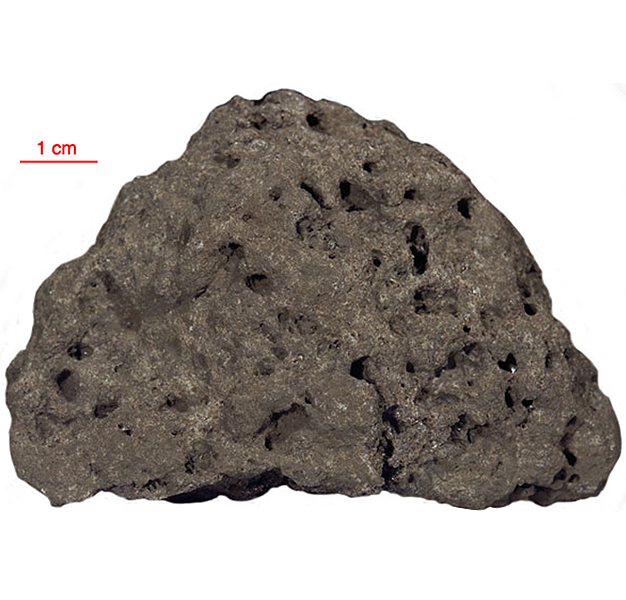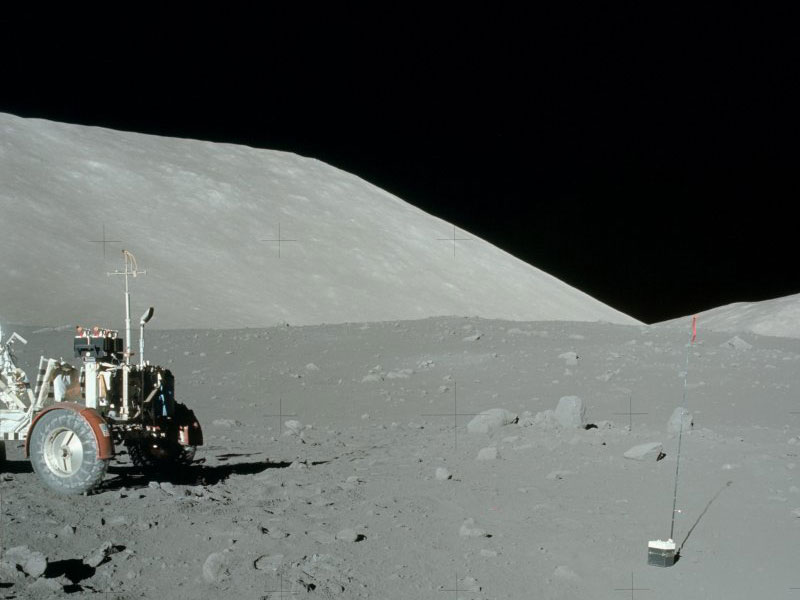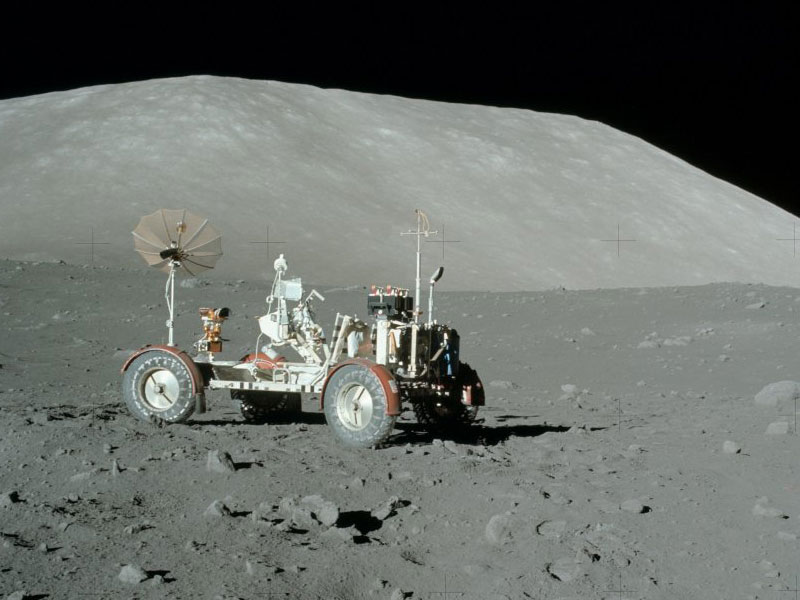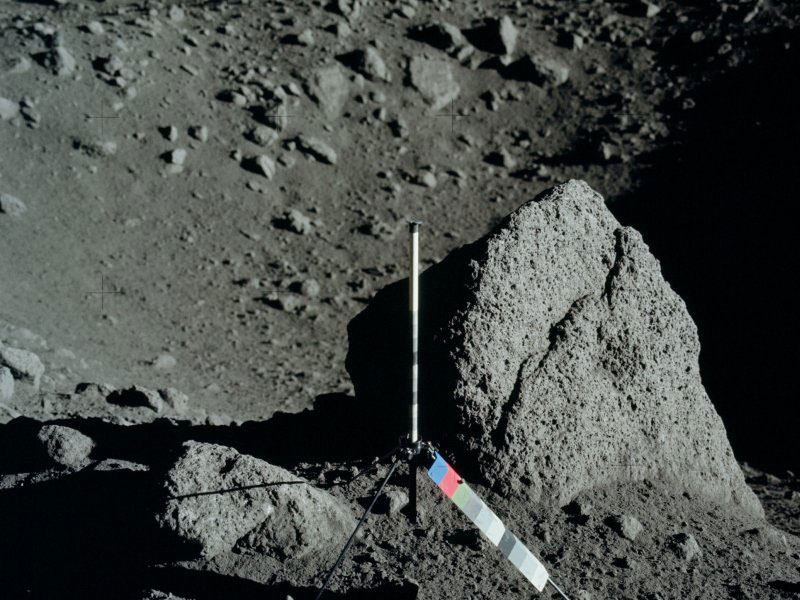
Fact sheet
Sample 71035 is high-titanium lunar Mare basalt collected during the Apollo 17 mission to the Moon. The rock is a vesicular basalt that has been subjected to extensive micrometeorite bombardment during its long history on the surface of the Moon. It was collected from the top of a boulder in a small crater near the Steno Crater and was erupted on the lunar surface 3.64 billion years ago.
In thin section the rock consists of pyroxene, plagioclase feldspar and skeletal ilmenite. Olivine is also present as rounded cores in some pyroxene crystals.
Further details of this and other Apollo samples are here: http://curator.jsc.nasa.gov/lunar/
Apollo 17, the final manned landing mission, had two objectives: to obtain samples of ancient rocks from the lunar highlands and to look for evidence of younger volcanic activity on the valley floor.
This small Collection contains material deriving from both periods, including igneous rocks around 4.3 billion years old from the lunar highlands as well as younger volcanic samples dating from about 3.6 billion years ago.
Apollo 17 was launched on 7 December 1972.









